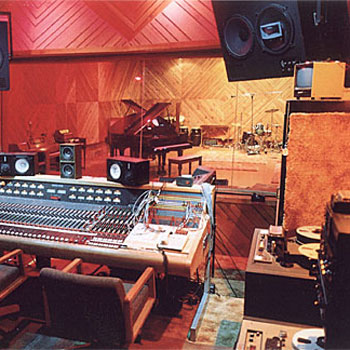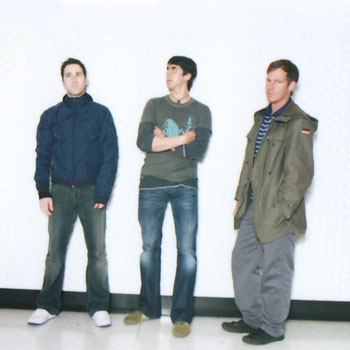


Drums and percussion, acoustic and electronic, ancient and futuristic. Make it a lifetime engagement. Begin in early childhood for optimal malleability. Piano lessons deploy transferable skills. Play myriad styles in search of the next-level thing. Program drum tracks, program brain. Fuse. Send to Earth.
Adroit, angular kit movement derives rhythm in a state of grace, fueled by pulsing molecular dislocation. It compels a drummer to break some new ground in the hierarchy of percussion, e-drums and audio samples. Ideas flex like a muscle. Break it down and fuck it up. Never rest ye sonic explorers, for these beats are destined to become socially acceptable only after thousands of hours of solo concentration.
The friendliest, most supportive audience is still quietly unforgiving. Do not waste their time. The musician vying for their attention has undergone a sort-of boot camp codified from a duty to wade through months—years—of bloody knuckles and throwaway tunes en route to cogent songwriting, layering and track composition. Navel-gazing pet projects are time-wasters. By exalting a punishing self-criticism in music, it’s no surprise we are seeking out the power of chemistry as an original and absolute necessity. If you can’t move the room or the floor, why bother? Even if it makes the artist feel good, fun is not the foremost preoccupation. Nailing the hook is.
In joining or forming a band that values discipline and constructive chaos, we found like-minded souls. Our magnetic obsessions lurk in windowless studios. It’s a brainstorm time warp in there. We’re not leaving until we pin down a sound signature that resonates through all instruments, and cultivate our will on formidable test beds. My story began with New York City and New Jersey, then Miami, San Francisco and elsewhere. This led to a legit record deal, sales and radio airplay throughout the United States and Europe.
We needed each other to trap lightning, record it under label contract, and ally with reputable top-tier management. The music industry is a harsh circuit that shakes out hits and impresarios. Where you were once hot shit, now you are mediocre in the upper echelon, but keep going. Suddenly a tiny door cracks open in the corner of a green room in clubs and venues people will remember forever. Is that worth anything in the abstract? Yes—99% of all bands will never make it this far.
In the 1990s we produced, engineered, and mastered EPs and a full-length album with alt-rock luminary Mark Kramer of Shimmy Disc + Second Shimmy (Galaxie 500, Sonic Youth, Ween, Yo La Tengo, Urge Overkill, Gwar, Low, Half Japanese, Jon Spencer, “Pulp Fiction” Grammy-winning soundtrack, etc.). There’s no short cut; lots of studio time, lots of gigs. The quality and quantity of the bookings started to ramp up—enough to place a firmament under the esprit de corps on tour. Suddenly it’s something sold-out on a Friday night, critics and A&R sharks skulking the wings behind the klieg lights. You will be judged. The good ones will evaporate instantaneously if your set is bodge or hackneyed, or if the opening act outshines you.
Eventually we pushed behind the velvet rope beyond local gigs, achieved a summer alt-rock residency in NYC’s famed Limelight and played other legendary clubs. The lead singer was compelling, charismatic, strangely adored by producers, club owners and DJs. I was the youngest in the band, at age 22. By 23 we’re spanning the chasm with shows at reputable venues with locally-, nationally- and internationally-recognized acts (the full listing appears below). It all moves fast, and it doesn’t last long.
Now we’re here in the 2020s. All of the above is long done, dusted and banked forever in the reveries. In hindsight, it probably all started in the ancient formula: Repeat, sparkle and fade until the wheels fall off and it’s dust in the wind.
Evolving through concerts as the come-up, the headliner and the support for several well-known British and American bands over a blistering two-year span, the band Dandelion Fire (DF) obtained proper label-supported distribution through both indie record stores and chains (Tower Records, Virgin, etc.). Radio airplay was widely tracked, charted and logged to the guild of ASCAP, as legitimacy requires royalties, taxing and FCC approval.
There were fleeting Top-10 and isolated #1 rankings on indie alt-rock FM stations and college radio nationwide, with 20,000+ albums sold/distributed mostly in the US and western Europe (with transaction data showing they’re still out there, circulating and occasionally trading among collectors).
Outside DF’s core repertoire, we produced special vinyl LP editions of techno tracks minted for the global DJ set (spun by A-listers of the age such as Josh Wink, Carlos “Soul Slinger,” Keoki and other NASA DJs, DJ Dara, Sound Factory DJs, Caffeine DJs, etc.), and stargazed through odd bookings with a wide range of bands. There was a crossover sound meshing indie rock with electronic music; we were among the innovators and earliest-adopters of a generational shift. This is where I believe we did our best work, in the crease. This also inflamed the critical sensibilities of NME and Melody Maker. (Reviews of DF’s music across all media channels were mixed at best; some hated it, others were wildly positive.) From the outset to the finish, DF’s band management was overseen by alt-rock mastermind and MTV/120Minutes’ legend Matt Pinfield. We had deep ties and a real working friendship with Matt, and his industry connections were absolutely vital to our limited success.
We never underestimated the intensity of sonic competition on the circuit, nor the outer limits of risks taken in the genre. Far beyond dabbling in the nurturing-yet-unforgiving New York City arts crucible, the lessons poured in at light-speed. Wanly mocking our most serious efforts were vague reminders that validate cliches such as “sands in the hourglass” or “sword of Damocles” — burnished in adaptation to the logistics of recording, demos and showcases aimed at getting those contracts to press your sound on industry-leading studio equipment, with reputable producers.
Everyone in the band had parallel lives in post-university day jobs because music provides feeble scaffolding for life’s basic needs. Like the vast majority of bands formed, we inwardly knew we were good at music but not good enough to risk being nonchalant about our future finances.
Dandelion Fire’s final recording/involvement was a version of Frank Sinatra’s “I Won’t Dance” (the band’s only cover song), produced by Kramer for Grass Records’ (since sold to Wind-Up Records) 2-Disc “Chairman of the Board” tribute album (also released on two translucent blue-vinyl LPs). This was accomplished in collaboration with The Flaming Lips, Girls Against Boys, Lotion, Jawbox, Samiam, Whirling Dervishes, Down by Law, Screeching Weasel and 20+ other indie-rock groups.
Before this, we also provided two tracks on a well-received compilation called American Independence — The New York Underground which went out on Eurostar Records (Germany) for release in the European market.
In the 1990s, Dandelion Fire (signed to Kokopop / Shimmy-Disc Records) developed an anthology of about 20 originals and was consistently booked with alternative rock, Manchester-sound, Brit-pop, shoe-gaze and occasionally purely techno groups—essentially approximated by the “120 Minutes” milieu of that era. The audio range and style were an ambitious blend: hard indie- and garage-rock gestures of a former age washed over novel fluid expressions an effects processing. This is a way to bend acoustic sounds into the digital simulacra, the technological playground. There were moments that called for energy-filled floor-movers layered with skip-beats or syncopated bug-out beats containing the rare element known to connoisseurs as “bounce,” infused with electronics and tricky sonic processing tweaks, all of which was delivered with a slightly psychedelic edge.
Mostly human, little bit machine (+ influences). The soundscape followed along a similar blueprint as Stone Roses, Jesus and Mary Chain, My Bloody Valentine and Pixies, yet also heavily influenced by Primal Scream, The Smiths, Jane’s Addiction, Sonic Youth, The Cure, New York’s NASA/Liquid Sky techno underground. Geographically, this took us from New Jersey’s alt-rock havens (beginning with New Brunswick and alt-rock jewel WHTG, the seminal station) to New York City’s finest and beyond as the bookings increased.
Unfortunately, Kokopop Records crashed and burned due to litigation misadventures at the top, and just a mere month or two after completing our debut album. A desired lift-off or crossover moment never quite arrived, and a substantive indie-rock label died, sending all concerned parties scurrying for the cover of day jobs at the salt mine and the repellent resumption of life’s ordinary pursuits.
From 1996 to 2000 I provided drum and percussion tracks to several artists, bands and studio projects in Miami, Fort Lauderdale and Northern California. This is also when I began experimenting more with e-drums, future-forward beat layering/mixing, and production. I played lots of parties. It was an incredibly productive and socially-integrated phase of my life. You can be in the scene, or you can make the scene. I always wanted the latter.
In 2003 and 2004, Olympia Center vaguely approximated the sounds of Luna or The Velvet Underground. Its short-lived, detached and mellow countenance surfaced in SF’s SoMa art party circuit, and a clean-sounding four-song EP was produced from a roughly eight-song repertoire.
From 2004 to 2008 Black Box Recorder / What X is Trying to Say emerged as a trio with no discernible penchant for label-hunting, yet were able to secure gigs at a choice selection of coastal California venues based on 14 songs — only four of which were properly produced and pressed into an EP. The band played live shows and parties in San Francisco, was booked as a supporting act in Los Angeles and San Diego, and recorded at the Death Star-like Center of the Mile studio in SF’s Mission District using gear that was originally commissioned by George Lucas at Skywalker Sound, before the cinema scene went completely digital.
Since 2009 I’ve meaningfully dabbled with several other bands (or singer-songwriters) and did some independent recording sessions with Echodrone, Butcher Bird and Boy in the Bubble, Bay Area acts with highly divergent sounds.
With all former projects now dissolved, I maintain a dedicated studio in San Francisco and collaborate with various musicians, fill time with solo experimentation and seek future formation under the auspices of a sonic entity dubbed Lights in Satellites.


